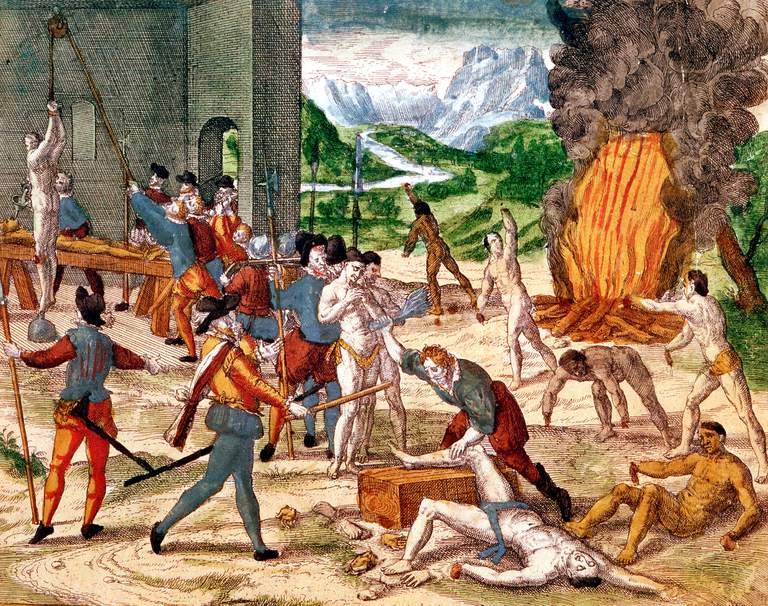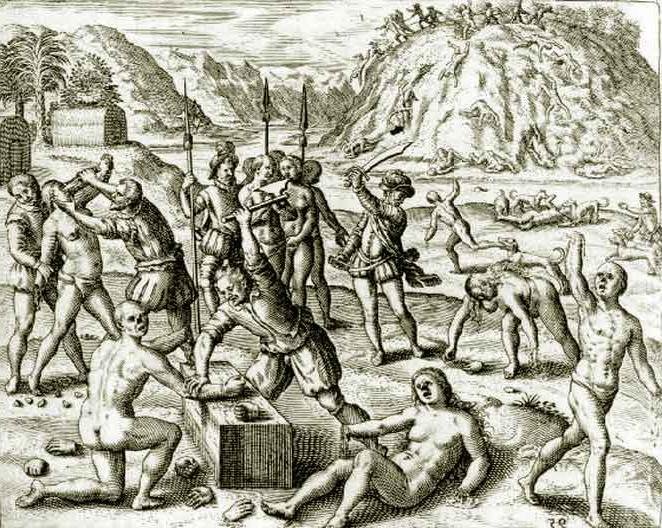In 15th century Europe, powerful monarchies were playing at Empire-building. The greatest player at the time was Spain, and though countries such as Portugal and the Netherlands were were eager to displace her crown, their efforts were more focused on territory to the south and east of Europe. While the Spanish were sending ships and men across the Atlantic to secure new lands in the Americas, the Protestant Reformation was sweeping through England. In its wake it left lower classes yearning for land and opportunity; nobles and businessmen with dreams of profit, and a monarchy that was eager to best the Catholic powers. Though a latecomer to the Empire game, England rapidly became the great rival to Spanish domination. The rivalry between Spain and England to be the premier Imperial power was played out largely in the New World. The outcome of this rivalry can be understood through a careful examination of each country's colonial practices and policies. A look at differences in motivation, policy toward native peoples, settlement patterns and economic circumstances will help explain the very different legacies left to the Americas by these cultures.

Spain
The Spaniards came to "serve God and the King, and also to get rich" (1). They were gutsy adventurers willing to risk it all for Gold, God and Glory. The Spanish Empire rose to power on two hugely profitable endeavors: the slave trade, and the sugar trade. They also reaped large windfalls of looted Native treasure and gold. From the first Spanish outpost in the New World a pattern was laid for the future of Spanish-Native interactions: looting, rape, murder and slavery. By the time Columbus returned to Spain from Hispaniola, the Caribbean tribes had already been subjected to atrocity and subjugation. And more would be in store, much more. Spain had a greater need to control native populations than her rival to the north. While the English policy was to push the Indians back, the Spaniards wanted control of the Native, over not only their body and labor, but their mind and spirit. "Serving God" meant conversion of non-believers, and often natives were given the choice between Christianity and death. By means of the Spaniards' superior technology and weapons, many natives were killed in battle or taken into slavery and worked to death, but it was European disease that was the Conquistador's greatest weapon. Large and complex civilizations were wiped out seemingly overnight by smallpox and other transmitted diseases for which no immunity had been developed.

Arawaks fighting Columbus.
Spanish colonial policy is decidedly exploitative. Approaches generally focused on immediate gains, finding or plundering gold and other precious metals, and capturing slaves to sell or for use on lucrative sugar plantations. Although slavery also played a large part in the English colonies, its consequence was far greater for the Spanish Empire. A large majority of all slaves brought to the New World came to Spanish colonies. In fact, many settlements were dominated by non- Spaniards, comprising mostly of slaves, Natives, or both. Little effort was made to establish sustainable outposts and living improvements, and they failed to recognize the value of market economies that were the foundation of the English colonies. To the New World, Spain sent a ruling class: administrators, soldiers, wealthy planters, as well as priests; a class of managers to oversee an untapped commodity, ripe for the plucking. Gradually, the encomienda replaced the conquistador system, whereby favored officers were granted lands and controlled native villages. This developed into a "society of extremes" with rich conquistadors and encomenderos on one side, and destitute natives on the other.
To Be Continued...
Fine works, did you buy steem power to reach this level in a short time ?
Images are very rare and article is valuable .